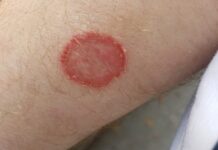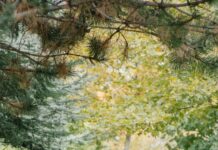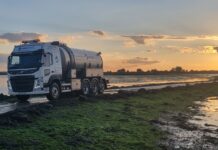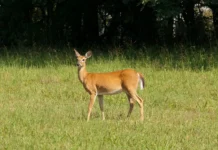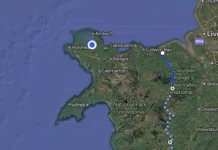The Vincent Wildlife Trust’s (VWT) third national polecat survey was launched at the beginning of this year. They are appealing for records of polecats, polecat-ferrets and feral ferrets from all over Britain during 2014 and 2015.
The polecat population in Britain experienced a severe historical decline as a result of decades of persecution for protection of poultry and demand for their fur. By the early twentieth century, the polecat had become extinct in most of Britain and was confined to a small area of mid Wales and the English border counties. Thanks to a reduction in persecution pressure and an increase in rabbit populations, the polecat population is now recovering and returning to many areas from which it has been absent for over 100 years.
Vincent Wildlife News 2014 Page 3
The results of two previous distribution surveys, in the 1990s and 2000s, demonstrated that polecats have expanded their range from their historical Welsh stronghold and have spread into much of central and southern England. Outlier populations are present in north-west England and parts of Scotland and are a result of reintroductions.
The survey aims to:
• Gather up-to-date information on the current distribution of polecats in Britain
• Develop understanding of the extent of hybridisation between polecats and ferrets. The polecat population in Britain is recovering following a severe historical decline. The VWT is undertaking a national polecat survey to provide up-to-date information on the species.
If you see a polecat or polecat-ferret, please send VWT:
• Grid reference and name of the nearest settlement
• Date
• Photographs: ideally one of the full body, including the paws, and a close-up photo of the face. This helps us to identify the animal.
• If it is not possible to take a photo, record the coat colour of the animal.
Please email record details to enquiries@vwt.org.uk, phone 01531 636441 or visit www.vwt.org.uk
If you have collected a carcass, please keep it in a freezer and VWT will arrange for a postage box to be sent to you free of charge.
Cyfle i helpu â’r Arolwg Ffwlbartiaid gan Ymddiriedolaeth Bywyd Gwyllt Vincent
Cafodd y trydydd arolwg cenedlaethol o ffwlbartiaid gan Ymddiriedolaeth Bywyd Gwyllt Vincent ei roi ar waith ar ddechrau’r flwyddyn. Mae’r Ymddiriedolaeth yn awyddus i gael cofnodion o bob cwr o Brydain yn ystod 2014 a 2015 ynghylch ffwlbartiaid, ffwlbart-ffuredau a ffuredau sydd wedi dianc a mynd yn wyllt.
Bu lleihad difrifol o ran niferoedd y ffwlbartiaid ym Mhrydain yn sgil cael eu herlyn am ddegawdau oherwydd bod pobl yn diogelu eu dofednod ac oherwydd y galw am eu crwyn. Erbyn dechrau’r ugeinfed ganrif roedd ffwlbartiaid wedi darfod o’r tir yn y rhan fwyaf o Brydain, gan olygu bod y boblogaeth wedi ei chyfyngu i ran fechan o ganolbarth Cymru a siroedd y gororau yn Lloegr. Gan fod llai o erlyn erbyn hyn a bod cynnydd yn niferoedd cwningod, mae niferoedd ffwlbartiaid ar gynnydd ac mae’r rhywogaeth yn dychwelyd i lawer o ardaloedd lle bu’n absennol am fwy na 100 mlynedd.
Vincent Wildlife News 2014 Tudalen 3
O ganlyniad i’r ddau arolwg blaenorol o ddosbarthiad ffwlbartiaid, y naill yn y 1990au a’r llall yn y 2000au, gwelwyd bod ffwlbartiaid wedi ymledu o’r cadarnle hanesyddol yng Nghymru gan ddychwelyd i rannau helaeth o ganolbarth a de Lloegr. Poblogaethau a ailgyflwynwyd yw’r poblogaethau ynysig eraill sy’n bresennol yng ngogledd-orllewin Lloegr ac mewn rhai ardaloedd yn yr Alban.
Nod yr arolwg yw:
• Crynhoi’r wybodaeth ddiweddaraf am ddosbarthiad presennol ffwlbartiaid ym Mhrydain
• Deall i ba raddau y mae ffwlbartiaid a ffuredau wedi croesi â’i gilydd. Bellach mae niferoedd ffwlbartiaid ar gynnydd ym Mhrydain a hynny ar ôl gostyngiad difrifol dros gyfnod maith iawn. Mae Ymddiriedolaeth Bywyd Gwyllt Vincent yn cynnal yr arolwg hwn o niferoedd ffwlbartiaid ledled Prydain er mwyn sicrhau bod y wybodaeth ddiweddaraf ar gael am y rhywogaeth.
Os gwelwch chi ffwlbart neu ffwlbart-ffured, anfonwch y canlynol at yr Ymddiriedolaeth:
• Cyfeirnod grid ac enw’r anheddiad agosaf
• Y dyddiad
• Ffotograffau: yn ddelfrydol llun o’r corff llawn, gan gynnwys y pawennau, a llun agos o’r wyneb. Mae hyn yn ein helpu i adnabod yr anifail.
• Os nad oes modd tynnu llun, cofnodwch liw blew yr anifail.
E-bostiwch eich cofnodion at enquiries@vwt.org.uk, ffoniwch 01531 636441 neu ymwelwch ag www.vwt.org.uk
Os ydych wedi codi corff ffwlbart, a fyddwch chi gystal â’i gadw yn y rhewgell, a bydd yr Ymddiriedolaeth yn trefnu bod blwch yn cael ei anfon atoch yn ddi-dâl er mwyn ichi allu anfon y corff atom.
Source: Carmarthenshire Biodiversity Newsletter September to December 2014
Help keep news FREE for our readers
Supporting your local community newspaper/online news outlet is crucial now more than ever. If you believe in independent journalism, then consider making a valuable contribution by making a one-time or monthly donation. We operate in rural areas where providing unbiased news can be challenging. Read More About Supporting The West Wales Chronicle









